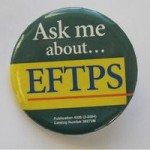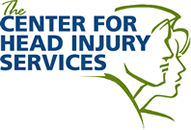 Starting on January 1, 2011, many businesses will be required to make federal tax deposits electronically. You will no longer have the option of making your federal tax deposits using coupons at the bank. Businesses that owe minimal amounts and were not subject to tax rules regarding coupons and filing will still be able to mail their payments with their filed tax return. For example: 941 filers with a deposit liability of under $2,500 can still mail their payments if they want to.
Starting on January 1, 2011, many businesses will be required to make federal tax deposits electronically. You will no longer have the option of making your federal tax deposits using coupons at the bank. Businesses that owe minimal amounts and were not subject to tax rules regarding coupons and filing will still be able to mail their payments with their filed tax return. For example: 941 filers with a deposit liability of under $2,500 can still mail their payments if they want to.
But if you were required to use the coupon system and made deposits at the bank, then you’re going to have to switch over the Electronic Federal Tax Payment System (EFTPS.) I’ll tell you the truth, I love EFTPS. I use it myself and I don’t have to. It’s free and it’s easy. But in order to use it, you have to sign up.
First, go to their website: https://www.eftps.gov/eftps/
It’s important to sign up before you actually have to make a payment because the signing up process takes some time. Go ahead and get started today if you’re going to be making payments in January. Make sure you have all of your information together before you start. You’ll need all of your standard business information, including EIN number, and of course the bank account and routing number that you’ll be making your tax payments from. You’ll be sent a PIN number and you’ll be able to start making payments after that.
You don’t even have to be a business to use EFTPS. An individual is also able to have an EFTPS account. I recommend that to people who have set up monthly installment agreements with the IRS. When you make a payment on EFTPS you get confirmation that you made the payment. That comes in really handy if you’re having an issue with the IRS.
The most important thing to know is that you need to make your payment on EFTPS one day before the payment is due by 8PM. If you don’t do it by then, your payment will be late. It’s okay to go in and schedule a payment in advance though. Let’s say for example that your company owes $3,641 in payroll taxes for December and your payment is due January 17th. You can go into EFTPS on January 2nd and schedule your payment for the 17th. You can schedule payments up to 120 days in advance.
One more important piece of information: When you use EFTPS, the government will not have unlimited access to your checking account. You initiate all of your payments. The IRS can’t just go in and grab your money without your say so.







 Many people need a copy of their federal income tax return in order to get a mortgage or file for financial aid. You can order a copy of your return from the IRS for $57, but most people can get everything they need with a tax return transcript.
Many people need a copy of their federal income tax return in order to get a mortgage or file for financial aid. You can order a copy of your return from the IRS for $57, but most people can get everything they need with a tax return transcript.